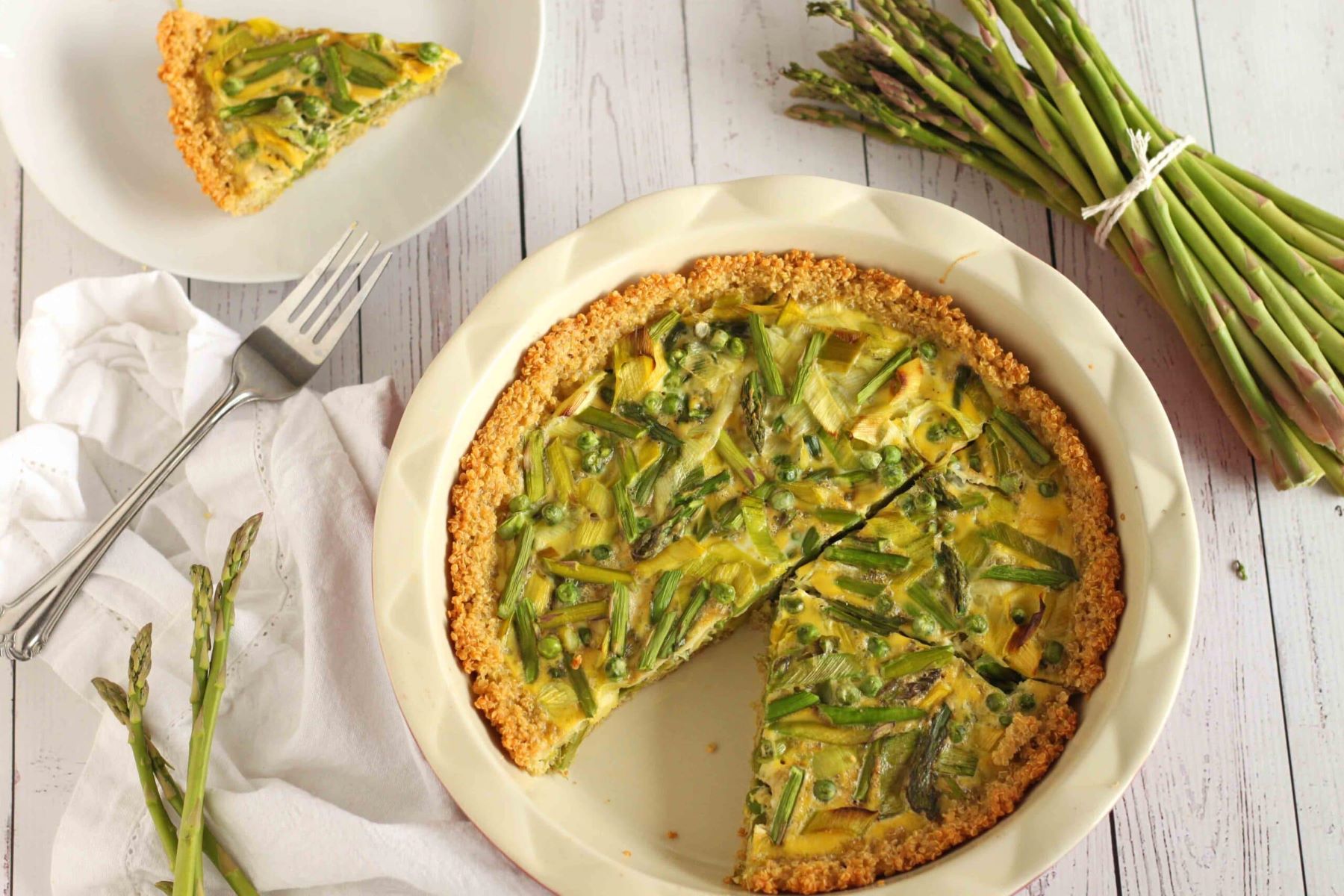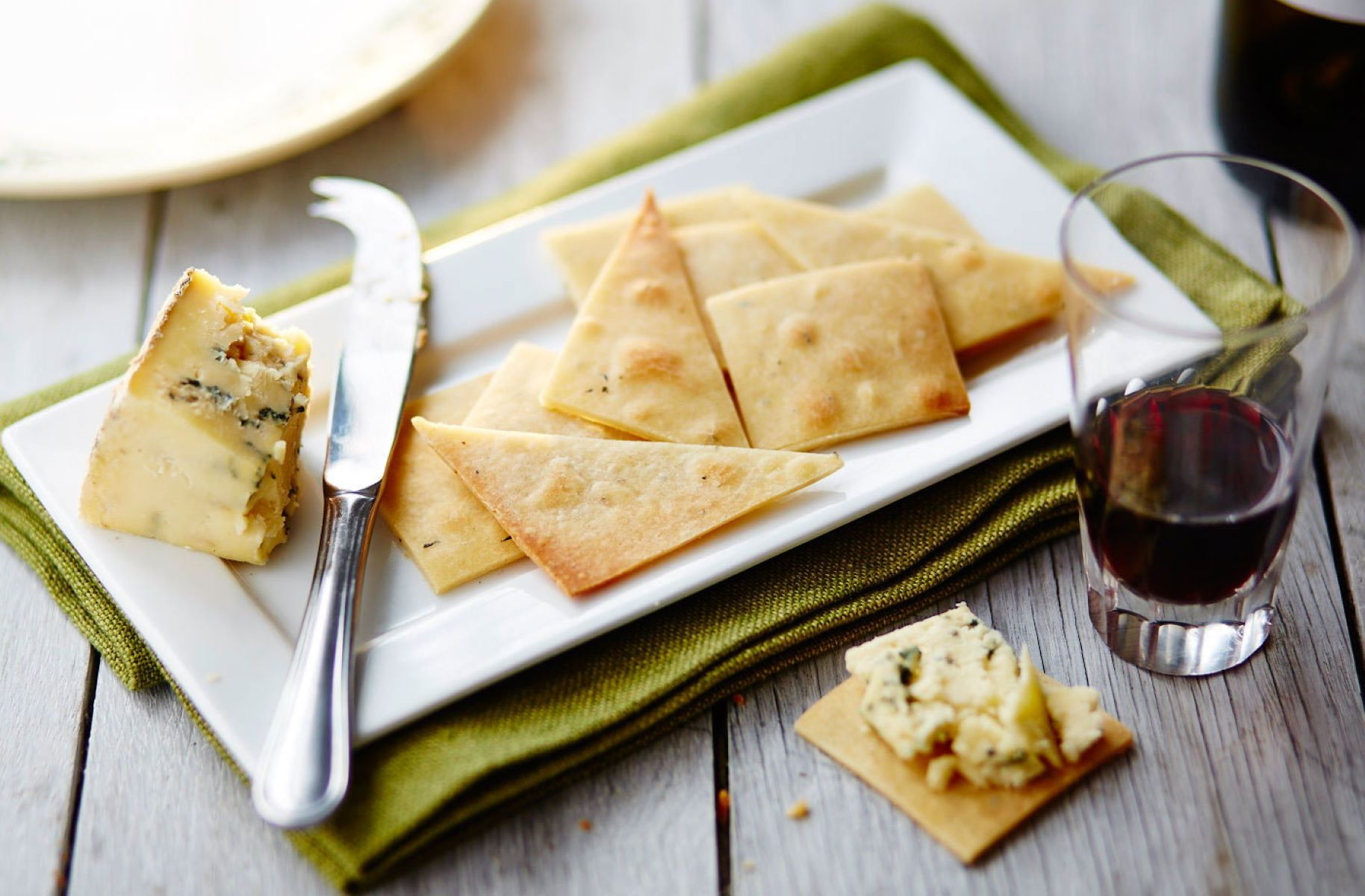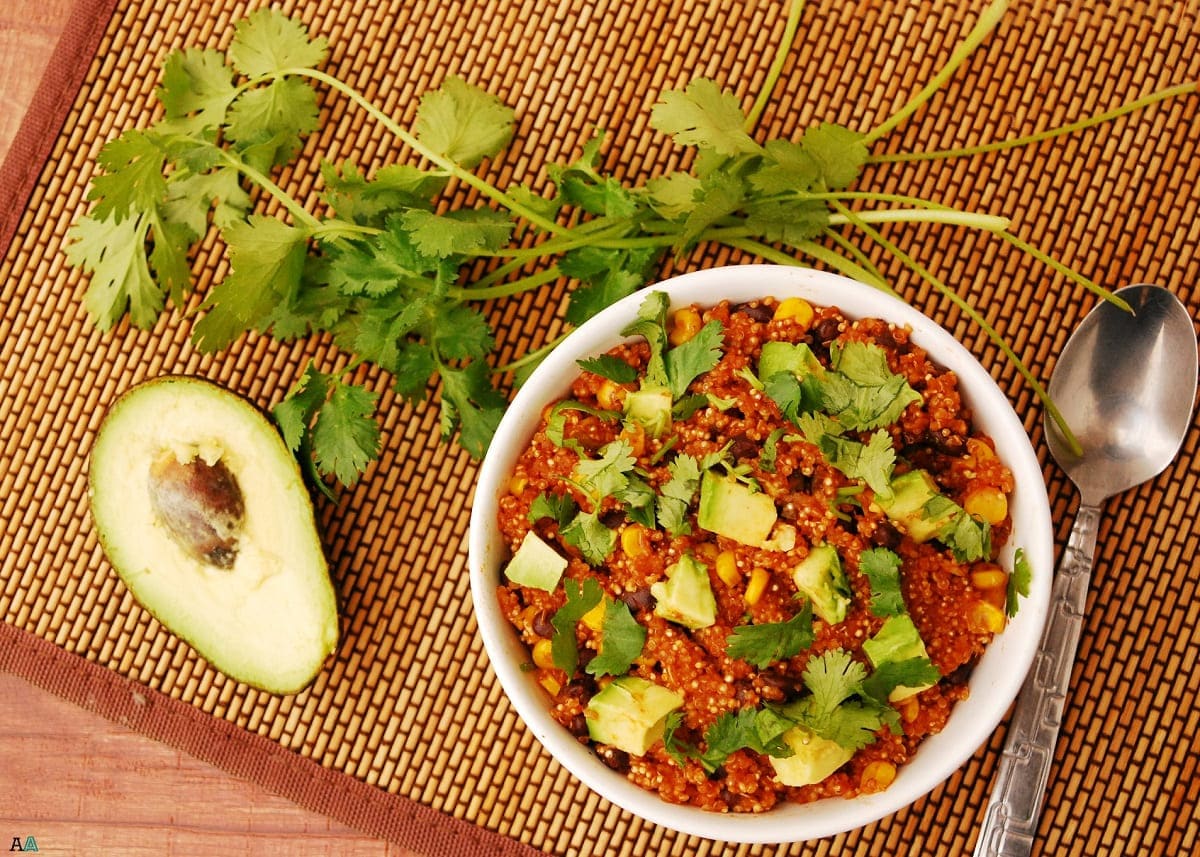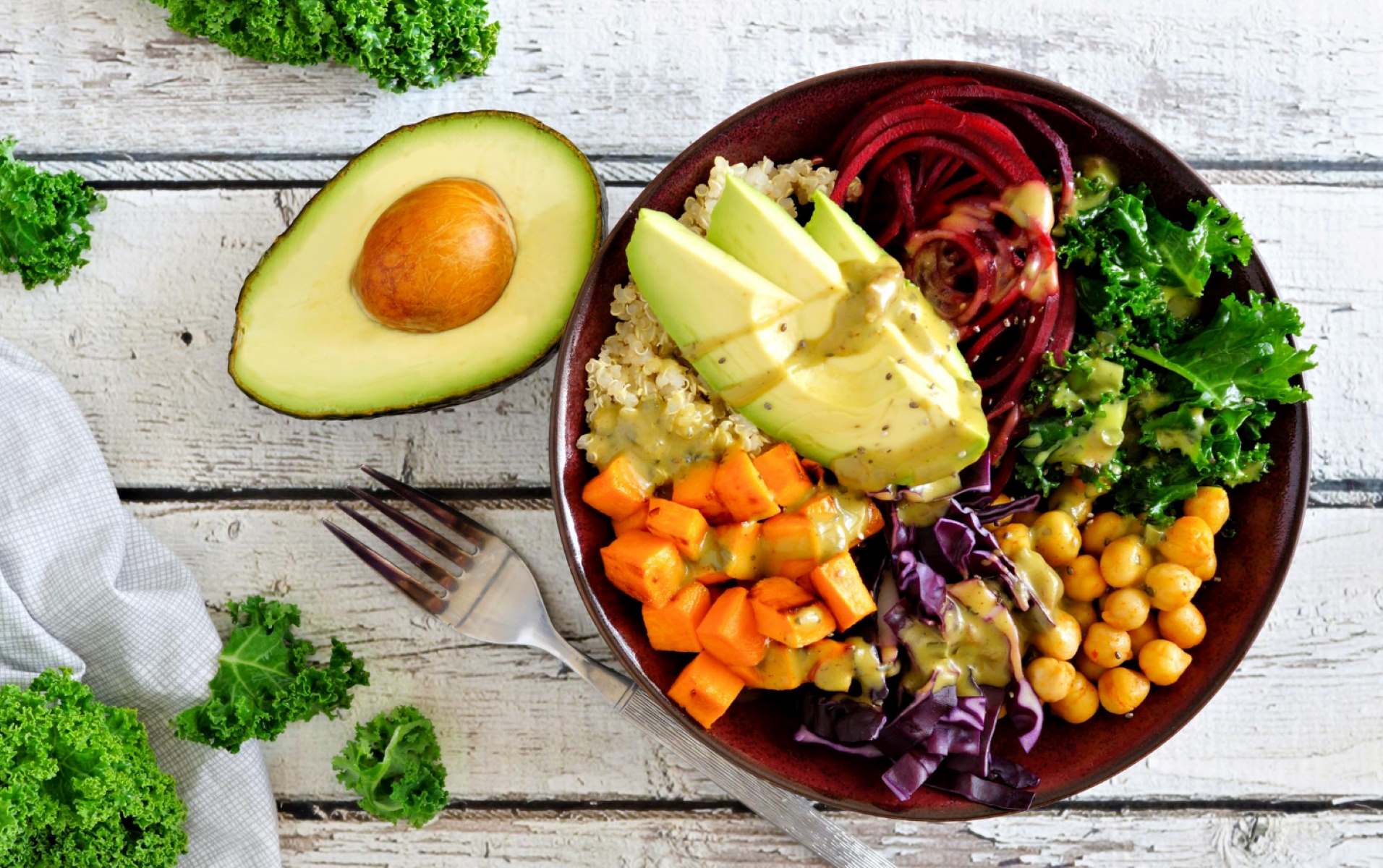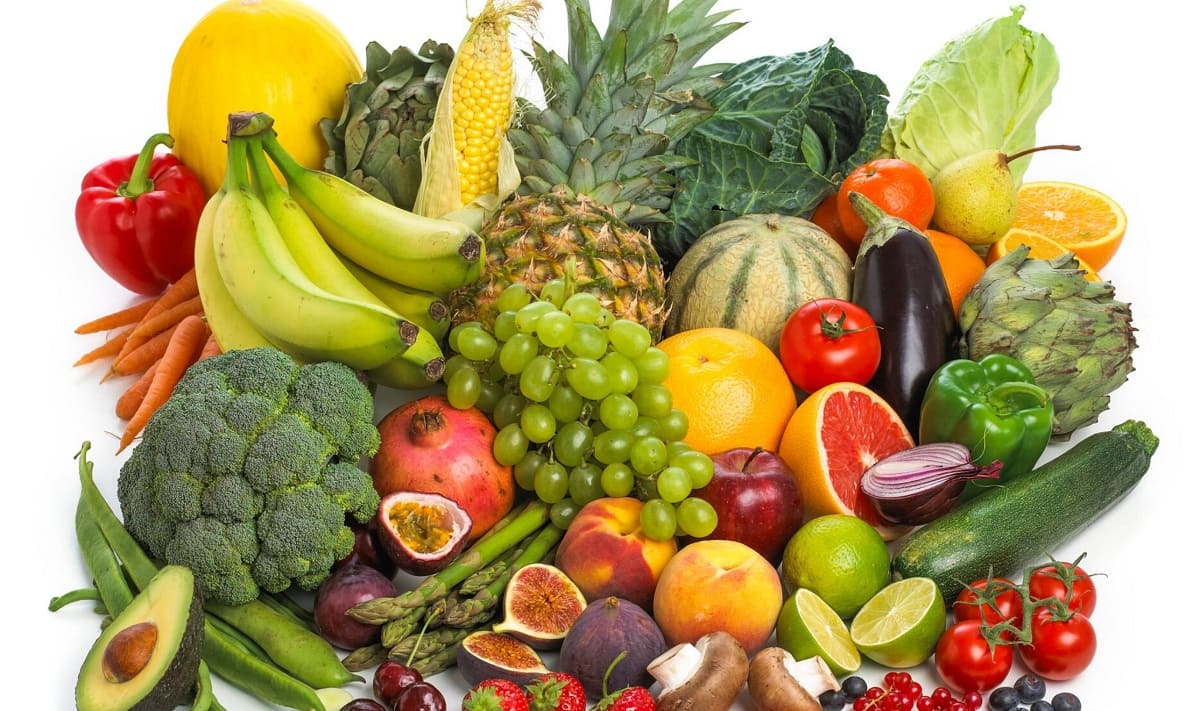Home>Eating>Gluten Free Bread For A Healthy Lifestyle – Sprout For Life
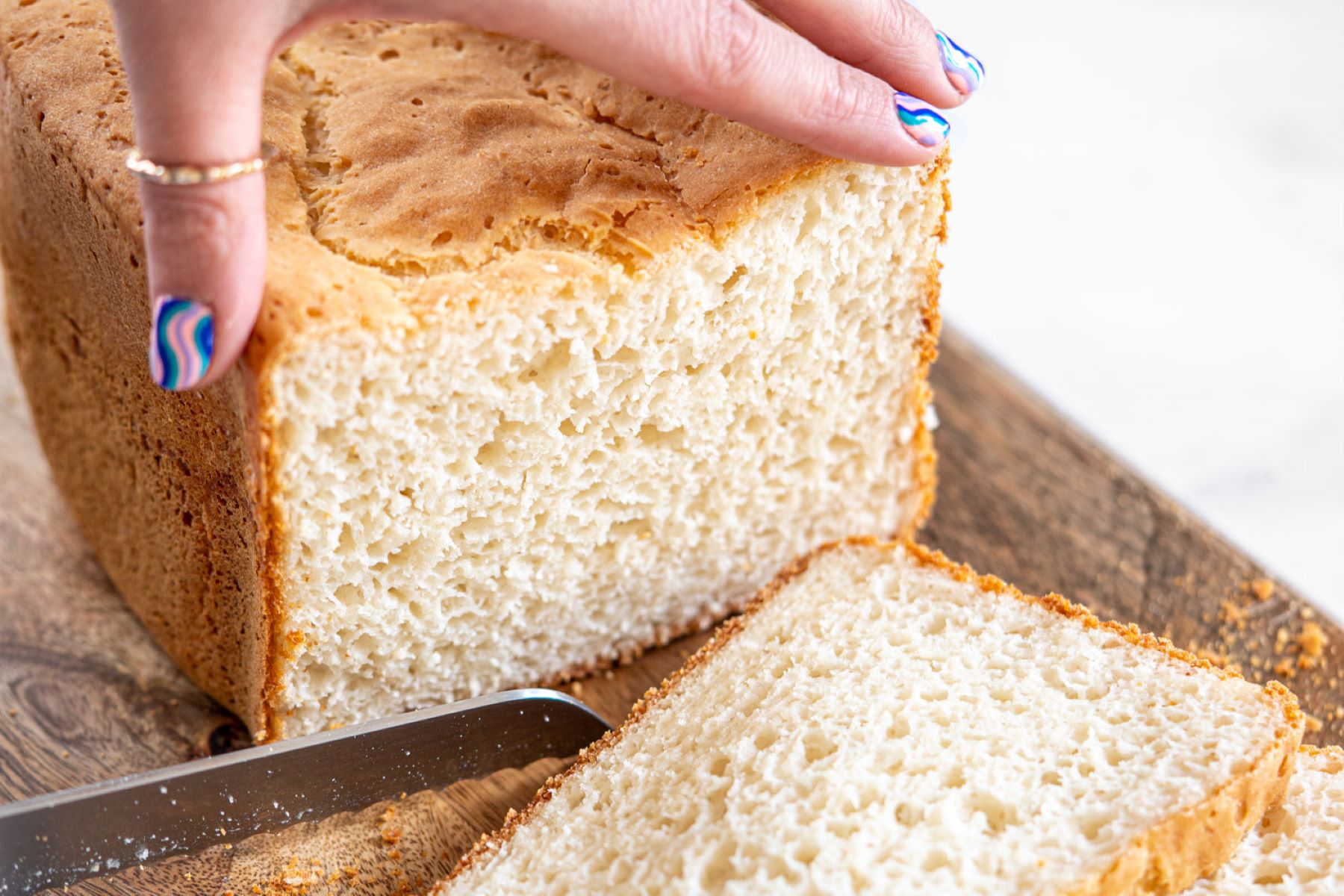

Eating
Gluten Free Bread For A Healthy Lifestyle – Sprout For Life
Published: February 15, 2024
Discover the perfect gluten-free bread for your healthy lifestyle at Sprout For Life. Enjoy delicious options for eating well and feeling great.
(Many of the links in this article redirect to a specific reviewed product. Your purchase of these products through affiliate links helps to generate commission for Simplelivingeating.com, at no extra cost. Learn more)
Table of Contents
Introduction
Gluten-free bread has become increasingly popular in recent years, as more people seek healthier dietary options. This alternative to traditional bread offers a delicious solution for individuals with gluten sensitivities or those looking to reduce their gluten intake. With the growing awareness of gluten-related health issues, the demand for gluten-free products has surged, prompting the food industry to innovate and create a wide array of gluten-free options, including bread.
Gluten-free bread is a staple for many individuals who follow a gluten-free diet due to celiac disease, gluten intolerance, or other health reasons. It provides a way for them to enjoy the simple pleasure of a sandwich, toast, or a hearty slice of bread without the discomfort or adverse reactions associated with gluten consumption.
In addition to catering to specific dietary needs, gluten-free bread has also gained popularity among health-conscious individuals who are keen on exploring alternative grains and ingredients. This shift in consumer preferences has led to a surge in the availability and variety of gluten-free bread options in grocery stores, bakeries, and online marketplaces.
As the demand for gluten-free products continues to rise, it's essential to understand the characteristics, benefits, and considerations associated with gluten-free bread. Whether you're a seasoned gluten-free enthusiast or someone curious about exploring new culinary horizons, delving into the world of gluten-free bread offers a wealth of opportunities to savor delicious, wholesome, and nourishing bread options.
Read more: Gluten-Free Quinoa Vegetable Salad
What is Gluten Free Bread?
Gluten-free bread is a type of bread that is specifically formulated to be free of gluten, a protein composite found in wheat, barley, rye, and triticale. This type of bread is a game-changer for individuals with celiac disease, gluten intolerance, or those who choose to follow a gluten-free diet for health reasons. Traditional bread contains gluten, which can trigger adverse reactions in individuals with gluten-related disorders, leading to digestive discomfort, inflammation, and other health issues.
Gluten-free bread is crafted using alternative flours and grains that do not contain gluten, such as rice flour, almond flour, coconut flour, tapioca flour, and sorghum flour. These ingredients are carefully blended to achieve a texture and flavor that closely resembles traditional bread, offering a satisfying and wholesome alternative for those who need to avoid gluten.
The absence of gluten in gluten-free bread poses a unique challenge in terms of texture and elasticity, as gluten is responsible for the characteristic chewiness and structure in traditional bread. To compensate for this, gluten-free bread recipes often incorporate binding agents such as xanthan gum or guar gum to mimic the binding properties of gluten. Additionally, the use of eggs, yogurt, or psyllium husk can contribute to the desired texture and moisture in gluten-free bread.
It's important to note that not all gluten-free bread is created equal. Some commercial gluten-free bread products may contain additives, preservatives, or high levels of sugar and sodium to enhance flavor and shelf life. Therefore, it's essential to carefully read the ingredient labels and opt for gluten-free bread that is made with wholesome, natural ingredients.
In summary, gluten-free bread offers a nourishing and delicious alternative to traditional bread for individuals who need to avoid gluten. By utilizing a diverse range of gluten-free flours and innovative baking techniques, gluten-free bread has evolved to deliver a delightful eating experience, making it a valuable addition to a healthy and inclusive diet.
Benefits of Gluten Free Bread
Gluten-free bread offers a myriad of benefits that cater to the diverse dietary needs and preferences of individuals seeking a healthier lifestyle. Here are the key advantages of incorporating gluten-free bread into your diet:
-
Digestive Health: For individuals with celiac disease or gluten sensitivity, consuming gluten can lead to digestive distress, including bloating, cramping, and diarrhea. By opting for gluten-free bread, they can alleviate these symptoms and support their digestive well-being.
-
Inclusive Diet: Embracing gluten-free bread promotes inclusivity, allowing individuals with gluten-related disorders to partake in the simple pleasure of enjoying bread-based meals without compromising their health. This fosters a sense of inclusiveness and culinary enjoyment within diverse dietary communities.
-
Nutrient-Dense Ingredients: Many gluten-free bread recipes incorporate a variety of nutrient-dense flours and grains, such as quinoa, amaranth, and teff. These ingredients offer essential vitamins, minerals, and dietary fiber, contributing to a well-rounded and nourishing diet.
-
Diverse Flavor Profiles: Gluten-free bread opens the door to a world of diverse flavors and textures, as it can be crafted using an array of alternative flours, seeds, and nuts. This variety allows individuals to savor unique and enticing bread options that cater to their taste preferences and dietary requirements.
-
Reduced Inflammation: For some individuals, gluten consumption may contribute to systemic inflammation, which can exacerbate various health conditions. By choosing gluten-free bread, they can potentially reduce inflammation and support overall well-being.
-
Healthier Eating Choices: Incorporating gluten-free bread encourages individuals to explore alternative grains and ingredients, fostering a greater appreciation for wholesome and unprocessed foods. This can lead to a more balanced and mindful approach to nutrition.
-
Enhanced Energy Levels: Some individuals report feeling more energized and less fatigued after transitioning to a gluten-free diet, including the consumption of gluten-free bread. This improved energy may be attributed to better digestion and nutrient absorption.
In essence, the benefits of gluten-free bread extend beyond meeting dietary restrictions; they encompass a holistic approach to well-being, culinary diversity, and inclusive eating experiences. By embracing the advantages of gluten-free bread, individuals can savor delicious, wholesome bread options while supporting their overall health and vitality.
Sprouted Grains in Gluten Free Bread
In the realm of gluten-free bread, the incorporation of sprouted grains introduces a compelling dimension of nutrition, flavor, and texture. Sprouted grains, such as quinoa, amaranth, millet, and buckwheat, offer a wealth of benefits that elevate the quality and healthfulness of gluten-free bread.
When grains are sprouted, they undergo a transformative process where they are soaked and germinated, leading to the emergence of young shoots. This sprouting process unlocks an array of nutritional advantages, making the grains more digestible and enhancing their nutrient content. Sprouted grains are known to exhibit higher levels of essential nutrients, including vitamins, minerals, and enzymes, compared to their non-sprouted counterparts. Additionally, the sprouting process can reduce the presence of antinutrients, such as phytic acid, which may hinder the absorption of minerals in the body.
In the context of gluten-free bread, the inclusion of sprouted grains contributes to a richer nutritional profile and a more complex flavor profile. These grains infuse the bread with a subtle nuttiness and a satisfying chewiness, enhancing the overall sensory experience. Furthermore, the sprouted grains lend a delightful texture to gluten-free bread, adding depth and character to each bite.
From a health perspective, the utilization of sprouted grains aligns with the principles of whole-food nutrition, offering a spectrum of essential nutrients that support overall well-being. The increased digestibility of sprouted grains may benefit individuals with sensitive digestive systems, allowing for easier assimilation and utilization of nutrients. Moreover, the enhanced nutrient bioavailability in sprouted grains can contribute to improved energy levels, better digestion, and overall vitality.
In the realm of gluten-free bread, the incorporation of sprouted grains introduces a compelling dimension of nutrition, flavor, and texture. Sprouted grains, such as quinoa, amaranth, millet, and buckwheat, offer a wealth of benefits that elevate the quality and healthfulness of gluten-free bread.
When grains are sprouted, they undergo a transformative process where they are soaked and germinated, leading to the emergence of young shoots. This sprouting process unlocks an array of nutritional advantages, making the grains more digestible and enhancing their nutrient content. Sprouted grains are known to exhibit higher levels of essential nutrients, including vitamins, minerals, and enzymes, compared to their non-sprouted counterparts. Additionally, the sprouting process can reduce the presence of antinutrients, such as phytic acid, which may hinder the absorption of minerals in the body.
In the context of gluten-free bread, the inclusion of sprouted grains contributes to a richer nutritional profile and a more complex flavor profile. These grains infuse the bread with a subtle nuttiness and a satisfying chewiness, enhancing the overall sensory experience. Furthermore, the sprouted grains lend a delightful texture to gluten-free bread, adding depth and character to each bite.
From a health perspective, the utilization of sprouted grains aligns with the principles of whole-food nutrition, offering a spectrum of essential nutrients that support overall well-being. The increased digestibility of sprouted grains may benefit individuals with sensitive digestive systems, allowing for easier assimilation and utilization of nutrients. Moreover, the enhanced nutrient bioavailability in sprouted grains can contribute to improved energy levels, better digestion, and overall vitality.
How to Make Gluten Free Bread at Home
Making gluten-free bread at home allows you to customize the ingredients, flavors, and textures to suit your preferences and dietary needs. Here's a simple yet versatile recipe for crafting delicious gluten-free bread in the comfort of your kitchen.
Ingredients:
- 2 cups gluten-free flour blend (such as a combination of rice flour, tapioca flour, and potato starch)
- 1/2 cup almond flour
- 1/2 cup ground flaxseed
- 1/4 cup psyllium husk
- 1 tablespoon active dry yeast
- 1 teaspoon salt
- 1 tablespoon honey or maple syrup
- 3 eggs
- 1 1/2 cups warm water
- 1/4 cup olive oil
- 1 teaspoon apple cider vinegar
Instructions:
-
In a large mixing bowl, combine the gluten-free flour blend, almond flour, ground flaxseed, psyllium husk, yeast, and salt. Mix well to ensure even distribution of the dry ingredients.
-
In a separate bowl, whisk together the honey or maple syrup, eggs, warm water, olive oil, and apple cider vinegar until thoroughly combined.
-
Gradually pour the wet ingredients into the bowl of dry ingredients, stirring continuously to form a smooth and slightly sticky dough. The psyllium husk will help bind the ingredients together and provide structure to the bread.
-
Transfer the dough into a greased loaf pan, using a spatula to shape it evenly within the pan. Smooth the top of the dough with wet hands to create a uniform surface.
-
Cover the loaf pan with a clean kitchen towel and place it in a warm, draft-free area to allow the dough to rise for approximately 1 hour. The dough should double in size during this time.
-
Preheat the oven to 375°F (190°C). Once the dough has risen, remove the towel and gently place the loaf pan in the preheated oven.
-
Bake the bread for 50-60 minutes, or until the top is golden brown and the loaf sounds hollow when tapped on the bottom.
-
Once baked, carefully remove the bread from the loaf pan and place it on a wire rack to cool completely before slicing.
By following this straightforward recipe, you can create a delectable loaf of gluten-free bread that boasts a delightful texture, wholesome flavor, and nourishing ingredients. Experiment with different flour combinations, add-ins such as seeds or dried fruits, and flavorings to tailor the bread to your taste preferences. With a bit of creativity and a willingness to explore, homemade gluten-free bread can become a cherished staple in your culinary repertoire.
Tips for Buying Gluten Free Bread
When it comes to purchasing gluten-free bread, navigating the diverse array of options available in the market can be both exciting and daunting. To ensure that you select high-quality gluten-free bread that aligns with your dietary preferences and nutritional goals, consider the following tips:
-
Read the Ingredient List: Prioritize products with simple, natural ingredients. Look for gluten-free flours such as rice flour, almond flour, quinoa flour, or sorghum flour, as well as wholesome additions like seeds, nuts, and whole grains. Avoid products containing excessive additives, preservatives, or artificial flavors.
-
Check for Whole Grains: Opt for gluten-free bread that incorporates whole grains and seeds, as they contribute essential nutrients and dietary fiber. Whole grains such as quinoa, amaranth, and buckwheat offer a nutritional boost and a delightful texture to the bread.
-
Assess Nutritional Value: Evaluate the nutritional content of gluten-free bread products, focusing on factors such as protein content, fiber content, and the presence of essential vitamins and minerals. Select bread that offers a well-rounded nutritional profile to support your dietary needs.
-
Consider Texture and Freshness: Look for gluten-free bread with a pleasing texture and softness. Freshness is key, so check for products with a reasonable shelf life and consider purchasing from bakeries or brands known for their commitment to quality.
-
Mindful of Additives and Sweeteners: Be mindful of the presence of additives such as xanthan gum or guar gum, which are commonly used in gluten-free baking to mimic the binding properties of gluten. Additionally, be cautious of high levels of added sugars or artificial sweeteners, as they may compromise the healthfulness of the bread.
-
Explore Artisanal and Local Options: Consider exploring artisanal bakeries and local producers that specialize in crafting gluten-free bread. These establishments often prioritize quality, flavor, and wholesome ingredients, offering unique and artisanal bread options.
-
Seek Certifications and Standards: Look for gluten-free bread products that are certified by reputable organizations or adhere to stringent gluten-free standards. Certifications such as the Gluten-Free Certification Organization (GFCO) or the Certified Gluten-Free label provide assurance of rigorous gluten-free practices.
-
Customer Reviews and Recommendations: Utilize customer reviews and recommendations to gain insights into the flavor, texture, and overall quality of gluten-free bread products. Hearing about others' experiences can guide your decision-making process.
By applying these tips, you can make informed choices when purchasing gluten-free bread, ensuring that you select products that align with your dietary preferences, nutritional requirements, and taste preferences. Whether you opt for traditional sliced bread, artisanal loaves, or specialty varieties, these considerations will empower you to savor delicious and nourishing gluten-free bread with confidence.
Conclusion
In conclusion, the world of gluten-free bread offers a diverse and enriching culinary journey, catering to the dietary needs, health goals, and flavor preferences of a wide spectrum of individuals. The evolution of gluten-free bread has transcended mere adaptation, giving rise to a vibrant array of wholesome, nourishing, and delectable bread options that resonate with the growing demand for inclusive and health-conscious food choices.
Gluten-free bread stands as a beacon of inclusivity, providing individuals with celiac disease, gluten intolerance, or other gluten-related sensitivities the opportunity to relish the simple pleasure of bread without compromising their well-being. This inclusivity fosters a sense of community and culinary enjoyment, reinforcing the notion that dietary restrictions should not hinder the joy of savoring delicious and satisfying bread-based meals.
The incorporation of sprouted grains in gluten-free bread further elevates its nutritional prowess, infusing each slice with enhanced digestibility, nutrient density, and a nuanced flavor profile. The utilization of sprouted grains aligns with the principles of whole-food nutrition, offering a holistic approach to nourishment and well-being.
For those venturing into the realm of homemade gluten-free bread, the freedom to customize ingredients, experiment with flavors, and craft nourishing loaves at home opens a world of culinary exploration and creativity. By following simple recipes and embracing alternative flours, seeds, and grains, individuals can embark on a rewarding journey of baking wholesome, flavorful bread that aligns with their dietary preferences and nutritional goals.
When navigating the marketplace for gluten-free bread, mindful consideration of ingredients, nutritional value, texture, and freshness empowers consumers to make informed choices that resonate with their individual needs and preferences. By prioritizing products with natural, wholesome ingredients and evaluating their nutritional content, individuals can select gluten-free bread that not only meets their dietary requirements but also delights their taste buds.
In essence, gluten-free bread embodies a celebration of diversity, nourishment, and culinary ingenuity. It transcends the confines of dietary restrictions, inviting individuals to embrace a world of flavorful, wholesome, and inclusive bread options that enrich their lives and uphold their commitment to well-being. Whether enjoyed as a comforting slice of toast, a hearty sandwich, or a delectable accompaniment to meals, gluten-free bread stands as a testament to the power of culinary innovation and the joy of savoring nourishing, delightful bread in all its forms.

